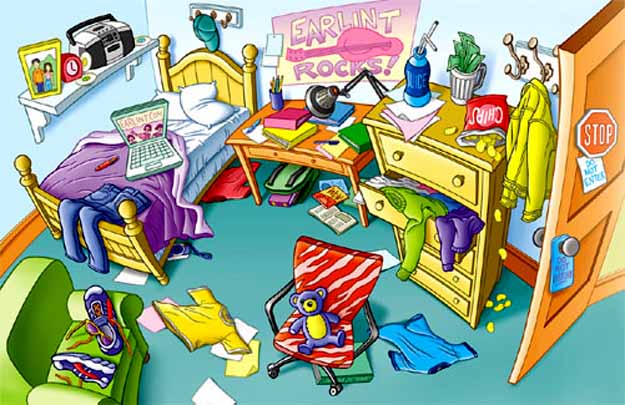The TOP 15 games that are presented in the following posts are the games that we personally love playing in the classroom with my students’. They are from the book “Games for Language Learning” by Cambridge university (reference can be found below).
GAME #15
Language
Main game: Asking questions using Are you + preposition + place (e.g. Are you on top of the cupboard?) in an attempt to locate someone
Variation
Making suggestions using Let’s + verb + object + preposition + place (e.g. Let’s hide the watch on top of the cupboard.)
Asking questions using Is it + preposition + place (e.g. Is it under the table?) in an attempt to locate something (optional) Asking questions using the present perfect (e.g. Have you hidden it near the door?) or the passive form (e.g. Is it hidden at the back of the classroom? or Has it been hidden at the back of the classroom?)
Preparation
(optional) You may like to bring a picture showing lots of places in which a mouse could hide (see step 1).
Procedure
- Invite the learners to take it in turns to imagine being a mouse. The ‘mouse’ should think of a hiding place in the room, or in a larger place, for example the school or the town. (Alternatively, show the class a picture and ask the ‘mouse’ to imagine where in the picture he or she is hiding.) Ask the ‘mouse’ to write down their location on a bit of paper. (This will prevent the ‘mouse’ from cheating!)
- Challenge the other learners to ask questions to try to find where ‘the mouse’ is, for example:
Learner 2: Are you in the cupboard?
‘Mouse’: No.
Learner 3: Are you under the desk?
‘Mouse’: No.
Variation 1 Hiding place
- Send one or two learners out of the room. Discuss with the class what small object they would like to hide and where it should be hidden. For example:
Learner 1: Let’s hide this watch.
Learner 2: Let’s hide this coin.
Learner 3: Let’s hide it under the box of chalk.
Learner 4: Let’s hide it in the cupboard.
- When the object is hidden, call the learner(s) in and challenge them to find the object by asking questions. For example:
Learner 1: Is it at the front of the room?
Class: Yes.
Learner 1: Is it on top of the cupboard?
Class: No.
At an intermediate level, the learner(s) who went outside the classroom can be asked to use the present perfect (e.g. Have you hidden it near the door?) or the passive form (e.g. Is it hidden at the back of the classroom? or Has it been hidden at the back of the classroom?).
- When the ‘seekers’ guess correctly, they should go to the place, find the object, hold it up and say: Is it this (watch)?
Note
As so often in games, you may decide that it will help the learners if you give examples of phrases on the board for them to make use of.
Some images you can use with this game:
Reference
Wright, A., Betteridge, D., & Buckby, M. (2006). Games for Language Learning (3rd ed., p. 142, 143). New York: Cambridge University Press.


